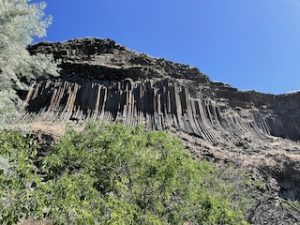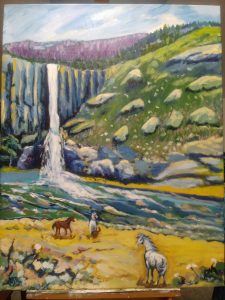 The Columbia City Yoga on-line Moving into Meditation class met this morning. We explored the intertwining threads of generosity and gratitude. Generosity arises from the fertile ground of relationship. When we nurture relationships with humans and more than humans we experience joy.
The Columbia City Yoga on-line Moving into Meditation class met this morning. We explored the intertwining threads of generosity and gratitude. Generosity arises from the fertile ground of relationship. When we nurture relationships with humans and more than humans we experience joy.
We continued to draw from Oren Jay Sofer’s book: Your Heart Was Made for This: Contemplative Practices for Meeting a World in Crisis with Courage, Integrity, and Love. In his chapter on generosity, Oren describes the most precious gifts we can offer: our time, our attention, our energy, our love.
Today I shared my experience of generosity during a recent visit to my brother Dan and sister-in-law Pauli. Deep listening in slow time were gifts we gave each other. We shared memories and learned more about the paths we’ve crossed over the many years. Dan and Pauli appreciate and make music. I brought home one of Pauli’s beautiful paintings (above) to remind me of Pauli’s imagination and my time at Palouse Falls State Park Heritage Site.
I shared quotations from Nez Perce (Nimiipuu) tribal members as displayed in the newly remodeled Nez Perce National Historic Park Visitor Center. The Center is an inspiring example of collaboration and generosity.
This post also contains tribal member artist Sarah Penney’s Mother Earth painting which hangs in the Hells Gate Louis and Clark Discovery Center. I’ve included the accompanying quotation which describes the peoples’ relationship with Earth.
We also received guidance from Robin Wall Kimmerer’s beautiful essay, Returning the Gift. Robin is a “mother, scientist, decorated professor, and enrolled member of the Citizen Potawatomi Nation. She is the author of Braiding Sweetgrass: Indigenous Wisdom, Scientific Knowledge and the Teachings of Plants.” Robin’s essay writes Earth is calling for our gratitude, generosity and attention. She reminds us that we have many gifts to give.
Welcome. Last week we explored how gratitude enriches our lives. It helps us to hold our joys and sorrows. Shared gratitude brings us together and helps us respond to life’s challenges. Generosity seems to spring from the joy of shared gratitude. Oren writes about what it is to give and then find joy in generosity:
To give we must trust that we have something worthwhile to offer: our time, our attention, our energy, our love. Every time we slow down enough to truly see another, we give with our presence. . . . Generosity illuminates our goodness and reminds us that we can make the world better. This instills dignity, wholeness and self respect, each of which helps us regard ourselves with love and accept our shortcomings.
 Last week I visited my brother Dan and sister-in-law Pauli in Lewiston, Idaho. Although we chat periodically by phone, I hadn’t seen Dan since our mother’s memorial in 2012. It was a bit of a leap to make this trip. I was uncertain about how we would relate to one another. Dan and Pauli gave me time, attention, energy and love. We gave each other our presence. We shared laugher and tears. It seems we have all become more kind, open and appreciative of our precious connections. I can’t express the gratefulness and joy I am feeling.
Last week I visited my brother Dan and sister-in-law Pauli in Lewiston, Idaho. Although we chat periodically by phone, I hadn’t seen Dan since our mother’s memorial in 2012. It was a bit of a leap to make this trip. I was uncertain about how we would relate to one another. Dan and Pauli gave me time, attention, energy and love. We gave each other our presence. We shared laugher and tears. It seems we have all become more kind, open and appreciative of our precious connections. I can’t express the gratefulness and joy I am feeling.
Oren also reminds us that:
True giving exists beyond obligation, performance or exchange. It comes without strings . . . It arises spontaneously from a natural impulse to share. . . . We give because we can. . . When you connect with the joy of giving, more of your actions will flow from generosity.
 The beauty of the natural world moves me to generosity. The natural world that includes humans and more than humans. The collaboration and generosity of others moves me to generosity. We visited the beautiful lands that were once the Nez Perce or Nimiipuu homelands along the Snake and Clearwater Rivers. The newly reopened Nez Perce National Historical Park visitor center is an inspiring example of collaboration and generosity. Over the past ten years tribal members and the National Park Service staff worked together to offer beautiful displays and exhibits of Nimiipuu culture and history. The tragic history of settler colonialism is balanced by the vital contemporary activities of the Nez Perce Tribal Government. The historic artifacts reflect the Nimiipuu’s relationship with their sacred lands. Here is tribal member William Timentwa’s comments:
The beauty of the natural world moves me to generosity. The natural world that includes humans and more than humans. The collaboration and generosity of others moves me to generosity. We visited the beautiful lands that were once the Nez Perce or Nimiipuu homelands along the Snake and Clearwater Rivers. The newly reopened Nez Perce National Historical Park visitor center is an inspiring example of collaboration and generosity. Over the past ten years tribal members and the National Park Service staff worked together to offer beautiful displays and exhibits of Nimiipuu culture and history. The tragic history of settler colonialism is balanced by the vital contemporary activities of the Nez Perce Tribal Government. The historic artifacts reflect the Nimiipuu’s relationship with their sacred lands. Here is tribal member William Timentwa’s comments:
Before hunting and fishing, you pray.You don’t pray that you’ll get it. You pray that if you get one, that you’ll take care of it.
In asking for Earth’s bounty you pray as an affirmation of your relationship and caretaking. Gratitude and generosity are woven together.
Here is tribal member Elwood Padwa’s description the practice of mourning generosity:
During a year of mourning, you prepare things to give away in memory of that person so you can move forward. They give things away to people they were fond of, or maybe family or others closer to them. They’ll set out stuff and tell people to pick it up. Whoever was attending the memorial will bring something away.
This mourning give-away is an example of Oren’s “true giving.” It “. . . exists beyond obligation, performance or exchange. . . . ” It is “ . . . giving because we can.”
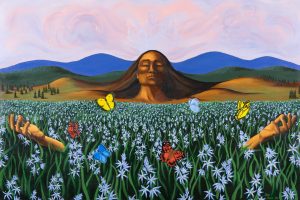 Local Nimiipuu artist Sarah Penney’s painting, Mother Earth, hangs in the Hells Gate Louis and Clark Discovery Center. Here is the inscription that describes the peoples’ relationship with Earth:
Local Nimiipuu artist Sarah Penney’s painting, Mother Earth, hangs in the Hells Gate Louis and Clark Discovery Center. Here is the inscription that describes the peoples’ relationship with Earth:
Before anyone can remember…a long time ago…before the human beings came…there was Mother Earth and Father Sky. All things come from them…all things…all beings…everything.
This land and sky has provided food, shelter, and clothing for our ancestors for many thousands of years. It still gives the gifts of salmon, elk, deer, moose, the gifts of bitterroot . . . and a large variety of berries. These gifts are to be taken care of by not taking too much or certainly not polluting or destroying them. The promise is that if we take care of the gifts, they will take care of us.
Only when we treat this earth as our Mother and the sky as our Father, can we find the healing so needed. Only when we treat this great earth as a part of our body, will we be able to understand her as our Mother. And only then can we see all people as one…brothers and sisters with one Mother and one Father.
We can realize our inter-being, our part of Earth’s greater wholeness. We can acknowledge our responsibility – our ability to respond with generosity and gratitude.
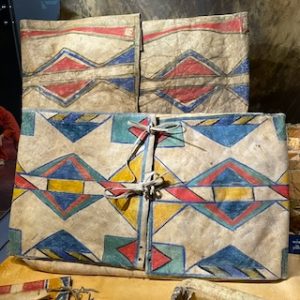 This is a good time to enter stillness. This is a good time to feel Earth’s body as part of our body. This is a good time to regard ourselves with love. I invite you to adjust your posture so you can let go and feel your inter-being. You might begin by feeling Earth in your bones. Sense the firmness and weight gradually settling. You might take a deeper breath and sigh – drawing in the out-breath of plants as you inhale. Your out-breath nourishing the green life around you.
This is a good time to enter stillness. This is a good time to feel Earth’s body as part of our body. This is a good time to regard ourselves with love. I invite you to adjust your posture so you can let go and feel your inter-being. You might begin by feeling Earth in your bones. Sense the firmness and weight gradually settling. You might take a deeper breath and sigh – drawing in the out-breath of plants as you inhale. Your out-breath nourishing the green life around you.
You might imagine this easy, natural flow of quiet changes: the many tree leaves capturing bits of sunlight and giving them to living roots. Composting leaves becoming food and finally living soil. You can feel summer gradually emerging in Earth’s body and in your body.
Right now you can feel the gentle letting go of out-breath, the easy pulse of in-breath. Like Earth rivers, inner rivers flow throughout your body to nourish and sustain, to clear and cleanse. Let your awareness be carried by the inner flow from your heart throughout your body and then back again.
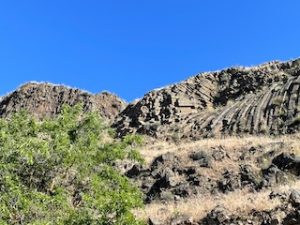 You can sense your inner fire metabolizing all you’ve taken in through eyes and ears, nose and tongue, the sunlight bathing your skin. Notice where your awareness is drawn: tissues of muscle or bone, dispersed sense of feeling emotion, mind states making themselves known.
You can sense your inner fire metabolizing all you’ve taken in through eyes and ears, nose and tongue, the sunlight bathing your skin. Notice where your awareness is drawn: tissues of muscle or bone, dispersed sense of feeling emotion, mind states making themselves known.
How do you sense Earth’s body: her breath, her living waters and metabolizing heat? Notice where imagining takes you: mountains and rivers, fields and forests, primordial forms slowly evolving, slowly moving, pulsing and settling.
Notice how you can feel the subtle flow of energy within beings and between things. Recall how you are given sun, water, soil. How do you relate to your human and more than human relations?
 Potawatomi writer, Robin Wall Kimmerer, asks us to name and appreciate the gifts that surround us so that we might experience the feeling of “enoughness.” Recall the last time you had that feeling of enoughness. You have enough, you are enough. How did it feel in your body? How did it move your heart?
Potawatomi writer, Robin Wall Kimmerer, asks us to name and appreciate the gifts that surround us so that we might experience the feeling of “enoughness.” Recall the last time you had that feeling of enoughness. You have enough, you are enough. How did it feel in your body? How did it move your heart?
There are so many ways to care for and honor our relations. We can trust that we have something worthwhile to offer: our attention, our energy, our love.
. . . we [can] slow down enough to truly see another, we [can] give . . . our presence. . . . [this] generosity illuminates our goodness . . . [it] instills . . . wholeness . . . [and] love . . .
We practice so that we can change our hearts. So that we can give our gifts in gratitude. We practice so that all may flourish and heal.

